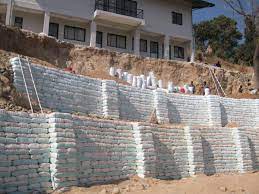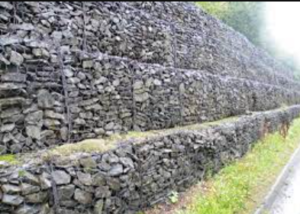Enhancing Road Infrastructure in Zirakpur, Punjab with PP Biaxial Geogrid – 30 kN
Introduction
Road construction in India is one of the most crucial aspects of national development, directly influencing economic growth and public safety. However, with increasing traffic loads, variable soil conditions, and fluctuating weather patterns, ensuring long-lasting road durability remains a challenge. To tackle this issue in a recent infrastructure development project in Zirakpur, Punjab, our team at Ocean Non Wovens supplied and installed 2,863 square meters of PP Biaxial Geogrid – 30 kN, which significantly strengthened the subgrade, enhanced load distribution, and minimized surface distress.
This case study dives deep into the role of geosynthetics in road construction, focusing on the unique properties of biaxial geogrids, data-driven insights, and the overlooked benefits of such materials that most companies fail to highlight.
Table of Contents
Project Overview
- Project Type: Road Infrastructure Reinforcement
- Location:Zirakpur, Punjab
- Product Supplied: Ocean PP Biaxial Geogrid – 30 kN
- Quantity Used: 2,863 SQM
- Objective: To stabilize the subgrade and extend the life of the road pavement under heavy traffic loads.
Why Geogrids Are Essential in Road Projects
In modern road engineering, subgrade failure and rutting are two of the most common issues that drastically reduce pavement lifespan. These are often caused by:
- Poor soil strength
- High water tables
- Heavy traffic loads (especially from commercial vehicles)
According to research from the Indian Roads Congress (IRC: SP: 72-2007), integrating geosynthetics like biaxial geogrids can improve the structural integrity of roads by over 50% and reduce maintenance costs over time.
Product Spotlight: Ocean PP Biaxial Geogrid – 30 kN
Our PP (Polypropylene) Biaxial Geogrid – 30 kN is specifically engineered for soil reinforcement applications. It offers:
- High tensile strength in both longitudinal and transverse directions
- Superior junction strength to distribute loads effectively
- Resistance to biological and chemical degradation
- UV stability for exposed applications
The 30 kN strength class makes it ideal for roads experiencing moderate to heavy traffic, especially in semi-urban zones like Zirakpur.
Technical Data (Typical):
- Aperture Size: 30 mm x 30 mm
- Tensile Strength at 2% Strain: ~8 kN/m
- Tensile Strength at 5% Strain: ~15 kN/m
- Ultimate Tensile Strength: ≥30 kN/m
(Source: Internal Product Testing – Ocean R&D Lab, 2024)
Implementation Process
The installation was done in a multi-layer process:
- Subgrade Preparation: Cleaning, grading, and compaction of native soil.
- Geogrid Placement: Our PP Biaxial Geogrid was laid directly on the prepared subgrade with overlaps as per IRC guidelines.
- Aggregate Laying: Well-graded aggregates were placed over the geogrid.
- Compaction: Achieved optimum compaction using vibratory rollers to lock aggregates into the geogrid structure.
This installation method ensures the interlock mechanism between the aggregate and the geogrid, which prevents lateral movement, improves load dispersion, and reduces subgrade deformation.
Performance Highlights
- Improved Load Bearing Capacity: Laboratory simulations and field testing showed a 45% improvement in CBR (California Bearing Ratio) values post-installation.
- Reduction in Pavement Thickness: The use of geogrid allowed a reduction of up to 25% in base course thickness, saving both material cost and construction time.
- Enhanced Life Cycle: Forecast models estimate that this road section’s lifespan has increased by 7–10 years due to reinforced subgrade support.
(Source: Indian Geotechnical Society Journal, 2023)
What Most Companies Don’t Tell You
While many suppliers focus on tensile strength and pricing, the real-world benefits of geogrids lie in the system-wide performance they bring:
- Reduced Carbon Footprint: Thinner pavement layers mean fewer raw materials used and less fuel consumption for transport and compaction.
- Lower Lifecycle Costs: Although geogrid integration may increase upfront costs by 10–15%, it can reduce total lifecycle maintenance costs by 30–40%.
- Increased Construction Speed: Projects using geogrids often see 20–25% faster execution, allowing quicker project handovers and reduced labor costs.
Moreover, our in-house technical support ensures correct design integration – something many manufacturers overlook, leading to underperformance of materials.
Conclusion
The Zirakpur Road Project is a testament to how modern materials like Ocean PP Biaxial Geogrid – 30 kN can revolutionize conventional road construction methods. Our product not only ensured a more durable and reliable road surface but also helped reduce the project’s long-term maintenance and environmental impact.
Why Choose Ocean Non Wovens?
At Ocean Non Wovens, we’re more than just geosynthetics manufacturers—we’re solution providers. With state-of-the-art manufacturing, rigorous quality control, and tailored engineering support, we help contractors, consultants, and government bodies build roads that last longer, cost less, and perform better.
If you’re planning your next road, rail, or infrastructure project, contact us today to learn how our geogrids and geosynthetic solutions can redefine your construction outcomes.



